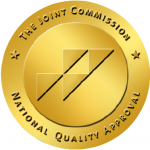What is tweaking? Why is this nickname used to describe individuals with methamphetamine addiction?
Tweaking is a slang term that means to be under the influence of methamphetamine, also known as “speed.” Tweaking is also defined as “to malfunction or to react with extreme emotion.” The odd actions and behaviors that can take place after meth use are known as tweaking, while the user is called a tweaker.
Dangerous Effects of Meth
Meth is a dangerous synthetic stimulant that attacks the central nervous system. The drug is either ingested, injected, snorted, or smoked. The effect of the drug lasts much longer than most drugs, especially when the user is on a binge. Consumption of methamphetamine has a neurotoxic effect on the brain cells which store the pleasurable brain neurotransmitters, dopamine, and serotonin.
Research has shown that meth addicts who have remained abstinent for at least nine months recovered from the damage to their dopamine transporters. Their motor skills and memory, however, were not found to have healed much at all during that time.
The consumption of methamphetamine has been proven to be associated with irreversible damages to the brain and the peculiar behavior known as tweaking. Even before tweaking occurs, there are immediate effects of meth on the body. Such symptoms include:
- Wakefulness
- Increased physical activity
- Decreased appetite
- Increased respiration
- Hypothermia
- Euphoria
- Irritability
- Insomnia
- Confusion
- Paranoia
- Aggression
What Does Tweaking Look Like?
After these immediate effects, tweaking occurs. Tweaking is the most dangerous stage of meth use, especially when use occurs over a long period of time or in binges. The symptoms of tweaking may not always be apparent to the meth user because they may be using another depressant substance to counteract meth’s effects.
While it is not uncommon for a methamphetamine user to continue using the drug after the initial high, the second high is typically not as extreme. Highs lessen each time during a binge. During this process, the user will often not sleep and will become irritable as they seek another high. It’s during this phase that they are likely to show symptoms of tweaking.
There are multiple stages of tweaking. Tweaking is most commonly associated with the stage when the meth user is coming down from their binge. Most likely, the user has not slept in days during the binge as they seek the same initial high without satisfaction. It can be quite dangerous to be around a meth user when they are in this phase because tweaking behavior is unpredictable and can appear like psychosis, including the appearance of hallucinations. During this delusional period, tweakers can hurt themselves or those around them. Some symptoms during this phase include rapid eye movements and body shakes.
The final stage in a meth binge is a crash. During this stage, the user stops tweaking and is finally able to sleep. Tweakers are extremely sleep-deprived and may even sleep for days. It is also common for the user to forget to eat or drink during their tweaking period. As a result, many tweakers may also be severely dehydrated and malnourished after days of ignoring their body’s needs.
Tweaking can also refer to the peak of a users’ high and the strange things that they do while high on meth. Some of these behaviors are strange and off-putting. However, such odd behaviors are the epitome of tweaking. Tweaking behaviors can include an obsession overtaking things apart, packaging items precisely into boxes, or organizing trinkets to obsessively cleaning the bathroom. Other behaviors could be excessive masturbation, jaw clenching, or teeth grinding. One of the most common behaviors of tweakers is the impulse to start a project and then not finish it.
Recovery Is Possible
Tweaking can be harmful and even fatal if the user puts themselves or others in a dangerous position or situation. If you or a loved one are struggling with a methamphetamine addiction, there is help and hope. Even after experiencing psychosis, meth addicts can become healthy functioning adults. Recovery is possible. At Boardwalk Recovery Center, we treat clients struggling with meth addiction who have been tweakers. Boardwalk Recovery Center provides hope and tools to clients that allow them to create a better future for themselves that is rooted in reality, not past behavior.
Reclaim Your Life: Break Free from Meth Addiction
If you or someone you care about is struggling with methamphetamine addiction, seeking professional help is crucial to reclaiming a healthy and fulfilling life. At Boardwalk Recovery Center, we understand the complexities of meth addiction, including the dangerous phase known as tweaking. Tweaking, characterized by erratic behavior and often accompanying psychosis, can pose serious risks to both individuals and those around them.
Our center offers specialized treatment designed to address the unique challenges of methamphetamine addiction, including comprehensive programs like our Intensive Outpatient Program (IOP). This program provides structured support tailored to individual needs, offering a blend of evidence-based therapies and holistic approaches to promote lasting recovery.
Recovery from meth addiction is possible, even after experiencing the intense effects of tweaking and psychosis. Boardwalk Recovery Center is committed to guiding clients through every step of their journey towards sobriety and a renewed sense of purpose. Contact us today to learn more about how we can help you or your loved one take the first step towards healing and a brighter future.
Life can be good again and we’d like to show you how.






